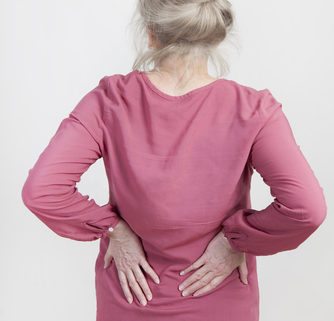Is Osteoporosis The Cause Of Your Back Pain?
Age plays a big role in spine fractures. As you age, your bones may become increasingly thinner and weaker, leading to the condition known as osteoporosis. The effort required to just hold your body erect can be enough to cause a spinal fracture when someone has osteoporosis.
Most of us have heard about osteoporosis, but we’re about to start hearing a lot more. That’s because the incidence of osteoporosis is sharply rising as population’s age in the United States. Osteoporosis is especially common in postmenopausal women. In fact, it is estimated that approximately 25% of all postmenopausal women in the United States have had a vertebral compression fracture.
Do My Weak Bones (or Low Bone Mass) Put Me At Risk For A Spinal Compression Fracture?
While osteoporosis is far more prevalent in women – approximately four times as many women have low bone mass or osteoporosis as men – it still occurs in men. As many as 25% of men over age 50 will suffer a bone fracture (e.g. hip or spine) due to osteoporosis.
Because osteoporosis is a “silent” disease, meaning that there are typically no symptoms until a fracture occurs, it is not uncommon for someone with back pain to be unaware of the fact that he or she has actually fractured a vertebra (or multiple vertebrae) in their spine.
What is a Compression Fracture?
A spinal fracture due to osteoporosis is commonly referred to as a compression fracture, but can also be called a vertebral fracture, osteoporotic fracture, or wedge fracture. Spinal compression fractures that occur as a result of osteoporosis are actually quite common, occurring in approximately 700,000 people in the U.S. each year. Most compression fractures result from slight or no force in older people with osteoporosis.
In a compression fracture of the spine, the drum-shaped part of one or more back bones (vertebrae) collapses into itself and becomes compressed into a wedge shape.
Typical Compression Fracture Symptoms
The main clinical symptoms of vertebral fractures typically include one or a combination of the following symptoms:
– Sudden onset of back pain
– Standing or walking will usually make the pain worse
– Lying on one’s back makes the pain less intense
– Limited spinal mobility
– Height loss
– Deformity and disability
Sometimes a compression fracture in the spine may not cause any back pain or other symptoms. Therefore, even if there is not back pain, middle age or elderly persons (especially women) need to be concerned about potential fractures if there is height loss, limited ability to twist and bend the back, and/or deformity that develops in the spine.
Non-Invasive Compression Fracture Treatment
Kyphoplasty is offered for patients with acute painful compression fractures of the spine. These fractures typically cause severe pain and may lead to the patients being wheelchair bound or bedridden, with severely limited daily activities. The most common reason for these fractures is the presence of osteoporosis; other less common causes are trauma and cancer.
The kyphoplasty procedure is a minimally invasive, non-surgical, outpatient treatment performed through one or two needle holes for each spine fracture. The needles are inserted using the latest in high resolution imaging technology. Balloons are inserted through the needle(s) to re-expand the bone; the resultant cavity is filled with a bone cement to internally cast the broken bone. Kyphoplasty procedures typically result in greater than 90 percent of patients experiencing near-complete or complete pain relief.
Don’t Suffer from Compression Fracture Back Pain Any Longer
Our Indianapolis radiologists offer state-of-the-art, minimally invasive, nonsurgical procedures, and have accumulated one of the largest single center practices in the country. Leading Central Indiana, Interventional Physicians is a leading provider of kyphoplasty and back pain management services and have served Central Indiana since 2003.



